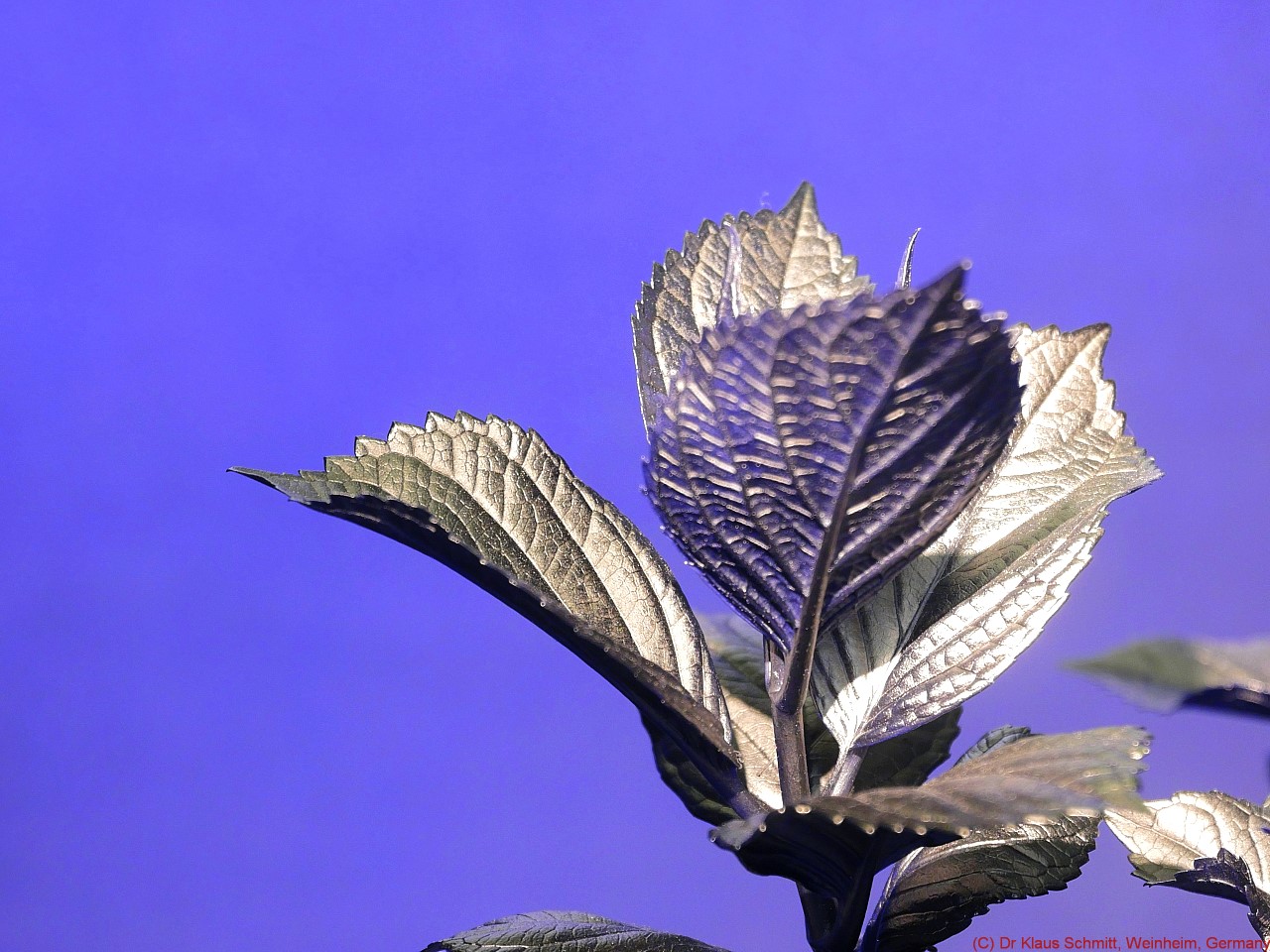Today more about UV polarizer experiments, using a special UV capable circular polarizer reaching down to approx. 320nm in front of my multispectral camera and UV-Nikkor 105mm lens, for recording polarized reflected UV images. But this time also the light source, my Xenon studio flash, had a special UV capable circular polarizer mounted. Object was a blue glass vase set on an aluminum lab jack. UV filter used was my classic Baader-U filter; Light source used was a modified for high UV output Xenon studio flash.
This research about using cross polarization in utraviolet light was stimulated by discussions with my colleague Dr Jonathan Crowther of
JMC Scientific Consulting
[click on image gets you a larger image]
Visible Light 0-degrees:

Visible Light 45-degrees:

Visible Light 90-degrees:

Reflected ultraviolet (UV) light through Baader-U filter (320-390nm:
Reflected UV 0-degrees:

Reflected UV 45-degrees:

Reflected UV 90-degrees:

Hexaptych Visible vs UV light at 0-45-90 degrees (left to right, top to bottom):

Reflected UV photography in polarized light shows quite some usefulness, especially if there are (glossy) surfaces which change the polarization angle of light and which the polarizer filter makes visible. This only works for UV light, if using the right polarizers, which
allow sufficient UV to pass without loosing the ability to polarize.
Downside of using polarizers is that one needs about 2 stops more exposure, due to the low approx. 25% transmission. Cross-polarization now allows to suppress shine and reflections, which can prove very useful at times. But that requires even more light, as the light loss is much larger even, which for reflected UV photography working at 8-10 stops below normal visible light photography might be cumbersome at times, requiring high ISO values, longer exposure times and strong light sources.
Some insects are able to see the polarization angle (and btw. we humans can also, but needs some traing:
Haidinger's Brush) especially
honeybees which navigate using the polarization angle of ultraviolet (UV) light.
I have written more about using UV polarizers
HERE
Stay tuned, more will follow on that fascinating subject...
More info on this very interesting field may be found on my site
http://www.pbase.com/kds315/uv_photos






















































